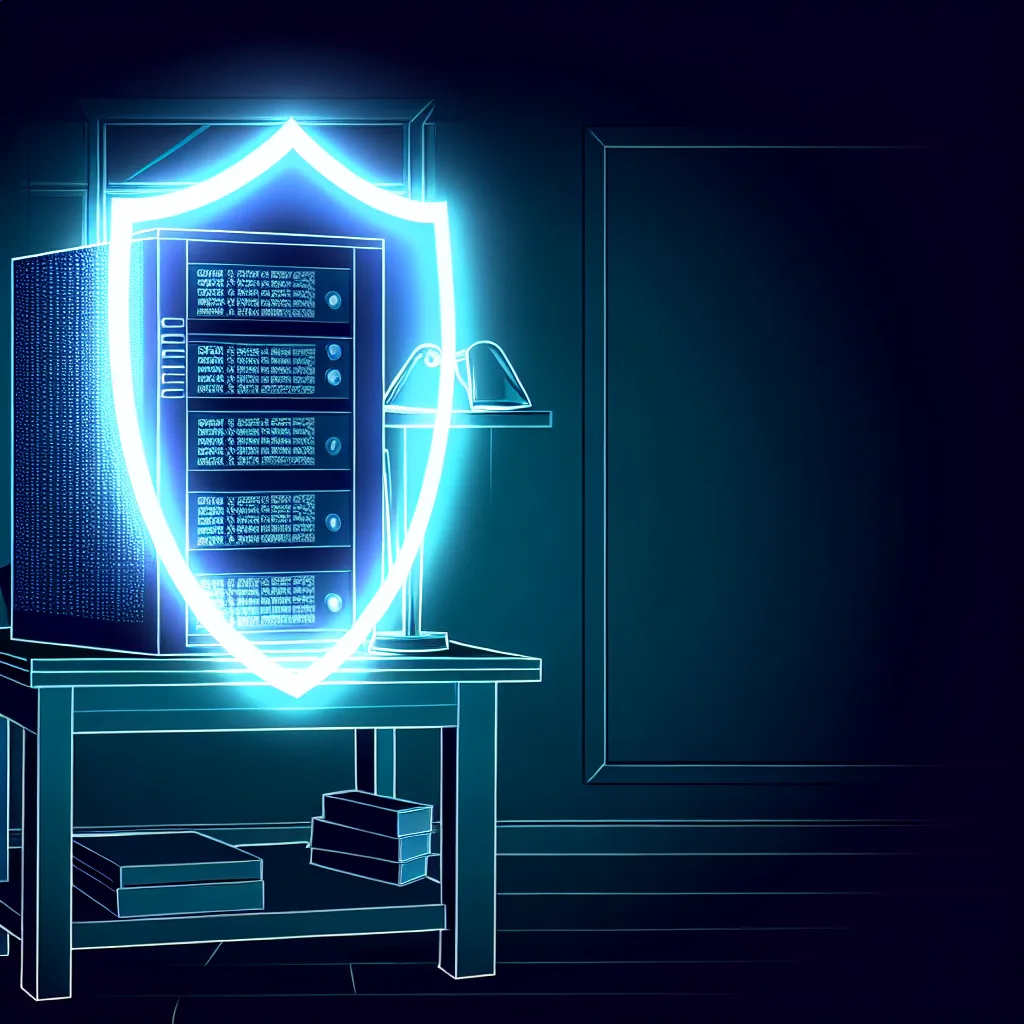A friendly, no-nonsense guide to monitoring, preventing, and securing your self-hosted services from unwanted attention.
So, you’ve done it. You’ve spun up your own corner of the internet, a home lab filled with useful services like Vaultwarden, Plex, or Nextcloud. It’s an amazing feeling, being in control of your own data. But then, a little thought might start to creep into the back of your mind, especially late at night: “Is anyone trying to break in?” If you’re wondering how to improve your home lab security, you’re asking the right question at the right time. It’s not about being paranoid; it’s about being prepared.
Let’s talk, friend to friend, about how you can get some peace of mind. You don’t need a degree in cybersecurity to put some powerful, simple protections in place. We’ll walk through how to see who’s knocking on your digital door and how to make sure that door is properly locked.
Step One: Improving Your Home Lab Security with Logs
Before you can stop unwanted guests, you need to know they’re there. This is where logs come in. Think of them as the security camera footage for your server. Every time someone (or something) tries to access a service, it gets written down.
Most of us access our services through a reverse proxy like Nginx Proxy Manager, Traefik, or Caddy. This is great because it centralizes all incoming traffic into one place, which also means it centralizes all the logs. Skimming these logs can tell you a lot. Are you seeing repeated login attempts from an IP address in a country you have no connection to? That’s a red flag.
But who wants to read raw log files all day? Nobody. That’s why the first tool in your arsenal should be Fail2ban.
- What it is: Fail2ban is a brilliant little bouncer for your server. It actively scans your log files for patterns—like too many failed login attempts in a short period.
- What it does: When it finds a malicious IP address, it automatically blocks it at the firewall level for a set amount of time. It’s an automated way to say, “Nope, you’ve had too many chances, you’re out.”
- Why it’s great: It’s lightweight, highly effective, and once you set it up, it just works. You can point it at your SSH logs, your Vaultwarden logs (via something like Caddy), and more. It’s one of the best first steps in proactive home lab security. You can learn more straight from the source at the Fail2ban official website.
Beyond Logs: Proactive Defense Measures
Watching for intruders is smart, but building a bigger wall is even smarter. A few proactive changes can drastically reduce the number of knocks you get on your door in the first place.
The Power of a VPN
Instead of exposing a service directly to the wild internet, why not keep it completely private? A Virtual Private Network (VPN) creates a secure, encrypted tunnel directly to your home network. Only devices with the right key can even see your services exist.
Tools like WireGuard and Tailscale have made this incredibly easy.
* WireGuard: It’s a modern, fast, and simple VPN protocol. You can set it up on a Raspberry Pi or a virtual machine, and it gives you a secure way to access your entire network from your phone or laptop, wherever you are. Check out the details on their website.
* Tailscale: This service is built on top of WireGuard and makes the process even simpler, especially for beginners. It handles all the complex networking stuff for you, creating a seamless private network between your devices.
For highly sensitive services like your password manager or file server, putting them behind a VPN is the gold standard.
Embracing Zero Trust
Here’s a modern approach to security: trust nothing by default. This is called a “Zero Trust” model. Instead of just opening a port on your router and pointing it to your server, you use a service that acts as a secure intermediary.
Cloudflare Tunnels are a fantastic—and often free—way to do this. The tunnel creates a secure outbound connection from your server to Cloudflare’s network. When you want to access your service, you go through Cloudflare, which handles authentication and protection before the request ever even reaches your home network. This means you don’t have to open any ports on your firewall, completely hiding your home IP address and services from the public internet. It’s a powerful layer of protection and you can learn more at Cloudflare’s site.
A Practical Home Lab Security Strategy
Feeling a little overwhelmed? Don’t be. Here’s a simple, actionable strategy to get started today.
- Start with Fail2ban: Install it and point it at the logs for your most exposed services, like your reverse proxy or SSH. This is your quick win.
- Review What’s Public: Look at every service you have exposed to the internet. Does it really need to be public?
- Deploy a VPN: For anything sensitive, set up WireGuard or Tailscale. Get into the habit of connecting to your VPN to manage your passwords or access personal files. It’s a small extra step for a massive security gain.
- Explore Cloudflare Tunnels: If you want to keep a service accessible but hide it from the open internet, a tunnel is your best friend.
Your home lab is a personal space for learning and experimenting. Securing it is just part of that journey. You don’t need to build an impenetrable digital Fort Knox overnight. By adding a few simple layers—monitoring with logs, blocking with Fail2ban, and hiding with a VPN—you can be confident that your digital home is safe and sound. Happy hosting!
Published on August 29, 2025
